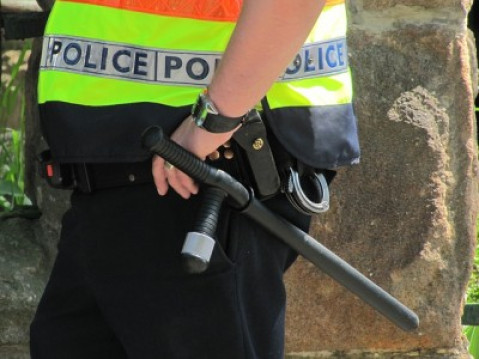Widgetized Section
Go to Admin » Appearance » Widgets » and move Gabfire Widget: Social into that MastheadOverlay zone
How Changing Demographics Affect Front Line Workers
The views expressed are those of the author and do not necessarily reflect the views of ASPA as an organization.
By James E. Wright II
June 17, 2016
America 2050 will look a lot different from America 1900. Since its founding, we have seen several prominent movements change the trajectory of the demographic characteristics of America. One of the more seminal and recent movements was the 1950s and 1960s civil rights movement, which lead to advancements not only for African-Americans but for Asian and Latino immigrant communities.
The civil rights movement, as well as countless others, has helped shape America into a distinctly different environment. We now live in a democracy that on its face is becoming more heterogeneous by the day. It has been well cited that by 2050 the majority population in America will be nonwhite Latinos with a stark increase in the total black and Asian populations. This will be the first time in America when the overall population will not be a nonwhite majority. Given these shifts, the individuals employed to govern and the way in which we govern as a nation should better reflect the changing demographics.
Bureaucratic actors represent the nexus of immediate interaction between the citizenry and the government. As citizens’ faith in government has been rapidly declining since the 1980s, changing demographics represents an avenue in which to build back that lost trust. One of the most immediate ways to increase trust in government is to first employ more minorities within the realms of front line workers (cops, teachers, counselors, firefighters).
While employing more minorities within these customary front line fields adds values, more diverse city governments are needed as well. Within the representative bureaucracy literature, it has been well formulated and tested that having a public workforce that resembles the salient demographics of the community it serves will ensure that more individuals are involved in the decision making process. While proving the link between passive and active representation has been harder, perceptual evidence has shown that passive representation (i.e., diverse workforce) leads citizens to have higher views of that public organization.

In establishing a more diverse workforce and creating the nexus between passive and active representation now and for future generations, there will be different sets of policy concerns worth addressing. For one, it is paramount that our educational institutions adequately prepare to deal with cultural and racial diversity in the classroom. While some scholars assume that diversity related scholarship begins in college, we must begin to train teachers in elementary, middle school and high school on topics surrounding culture and race and discuss those topics in the classroom. Education literature shows that learning in a more diverse setting amounts to higher educational outcomes for students of color. But I would posit that feeling comfortable in a school environment that fosters inclusiveness, diversity and community is essential to student success.
Secondly, our higher education institutions play an important role in creating the next batch of teachers that will be educating a more diverse America in the coming years. Higher education institutions must find ways to incentivize more students of color to become teachers. It is important for more teachers of color to be educators in schools with high levels of diversity no just as educators but as role models to the students they are teaching. Seeing a teacher that looks like them cane serve as encouragement to students, signaling that they can accomplish anything.
Besides our educational system, there seems to be a growing disconnect between police officers and minority communities. Several prominent events have shaped the narrative around community police relationships, many have been negative. As the demographics of America continue to diversify, law enforcement will need to 1) hire more minorities, 2) adapt to the changing needs of diverse communities and 3) engage in training and skill development to help officers deal with increased diversity.
 Much like teachers, police officers represent bureaucrats who are the first contact for many citizens. As the perceptions of many police officers, whether good or bad, has been shown in a negative light, changes must be made to remedy the situation. It is essential that the police workforce diversifies close to the extent of the community it serves. Whether or not these changes lead to improved behaviors or outcomes is a matter of which metric you use, but at least the perceptual images of the police force can improve.
Much like teachers, police officers represent bureaucrats who are the first contact for many citizens. As the perceptions of many police officers, whether good or bad, has been shown in a negative light, changes must be made to remedy the situation. It is essential that the police workforce diversifies close to the extent of the community it serves. Whether or not these changes lead to improved behaviors or outcomes is a matter of which metric you use, but at least the perceptual images of the police force can improve.
Besides basic services that all communities need, a more diverse community will have unique needs that need to be met by law enforcement. As many of these communities historically have experienced negative interactions with police officers, more time, effort and manpower may be needed to hold community forums, workshops and roundtables to get past negative stereotypes the community may hold.
Finally, the type of training for current and future police officers needs to engage a specific component on dealing with racial biases. This training will help police officers deal with the everyday situations they can expect while still being conscious of their own biases toward the people they serve.
It is important to recognize that none of the recommendations offered above are a panacea to deal with the changing demographics of America. However, they present techniques and strategies that two of the most important public servants can utilize. As America diversifies, the function of the front line worker will change as well. This will force them to either persist in current practices or adapt to the changing times.
Author: James E. Wright II is a third year doctoral student at American University School of Public Affairs.








Follow Us!